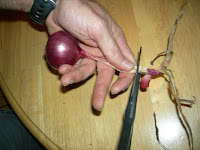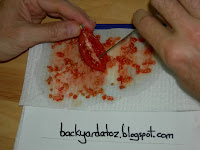There seems to be an endless stream of paper in the letterbox. It's great to recycle paper and cardboard, but if you have a wood burner, why give it away when it could be converted into free firewood?
For Christmas I was given a paper briquette maker. After deciphering the instructions, my son and I merrily started ripping and tearing newspaper and promptly turned it into sludge. Sometime later, arms covered in starch and paper glue, we proudly pressed out our first briquette. Several months later, we have a fair sized stack of briquettes drying for winter.
Let the kids earn their pocket money doing a job that will get them outside, squelching paper. It's a win:win for everyone. Here are some quick steps to get you started.
Add shredded paper from the office, cardboard, newspaper and other assorted bits and pieces of paper to water and let soak for a few hours. Note, cardboard will take longer to get suitably soggy.
When the paper is ready, set out the briquette maker. Place the base into the mould and set the arms flat on a firm base.
Start adding paper into the mould. I have found it best to place sheets first to set a framework to support all the other smaller bits that get added later.
Continue to fill the mould with paper mulch.
Set the paper, cardboard and shredded paper in layers. When full, place the press plate over the mould.
Raise the arms of the press and apply weight downwards on each side squeezing the water out of the briquette.
Once the water is pressed out, lift the press plate and raise the base from the mould.
A finished briquette fresh off the press.
Once finished, set out in the sun to dry. Afterwards, store in a well aerated position to finish curing. The briquettes will get progressively lighter in colour as they dry.




















































